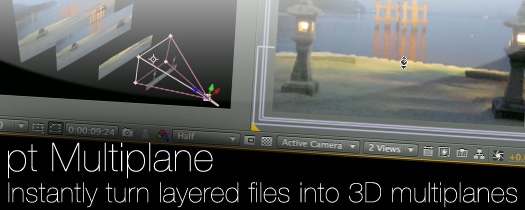
- #EXECUTESCRIPT MENUITEM NOT LOADING IN AFTER EFFECTS CC 2018 HOW TO#
- #EXECUTESCRIPT MENUITEM NOT LOADING IN AFTER EFFECTS CC 2018 INSTALL#
- #EXECUTESCRIPT MENUITEM NOT LOADING IN AFTER EFFECTS CC 2018 CODE#
Using two simple methods mentioned above, I was able to roughly understand some issues of my Zsh settings and tried to mitigate them to reduce startup time.

Benjamin developed a similar approach to more thorough tracing and analysis Zsh execution. In case you need to dig deeper, Arnout wrote a nice article in which he suggested a in-depth analysis and visualisation of Zsh loading using xtrace and kcachegrind. Two aforementioned approaches can give us a rough analysis on what aspects are invoked during Zsh startup so that we might figure out the bottleneck.

Performance Analysis Overall execution timeĬrunching some numbers on Zsh loading time would be definitely useful for further in depth analysis of its performance. TL DR:There are many aspects in Zsh that can potentially slow down its startup time and can be mitigated.
#EXECUTESCRIPT MENUITEM NOT LOADING IN AFTER EFFECTS CC 2018 CODE#
Most of the relevant code and configurations can be found here.
#EXECUTESCRIPT MENUITEM NOT LOADING IN AFTER EFFECTS CC 2018 HOW TO#
In this post, I will share and discuss some aspects that might affect Zsh loading time and how to mitigate them. I spent some time to refactor my own lightweight scripts instead of using big frameworks and was able to reach nearly one third of a second. Unfortunately, I realised that my favourite terminal app, iTerm 2, became more and more sluggish when loading a new tab or window with more than one and a half second (without some virtual environment loaders like nvm, rvm, rbenv, jenv).Ī quick G-fu could yield numerous posts on how to debug, optimise, speed up Zsh.
#EXECUTESCRIPT MENUITEM NOT LOADING IN AFTER EFFECTS CC 2018 INSTALL#
I used to install oh-my-zsh or the claimed-to-be-faster Prezto or Zim to leverage some of their cool libraries. The results impressively explain the empirical preference for NR or NR-blends in practice when it comes to minimizing CC wear.Z shell (Zsh) has been my shell of choice in both Linux and macOS.

This effect is briefly discussed in the context of the appearance of strain-induced crystallization (SIC) in the NR during cyclic impacts above a critical level. In the case of NR evolving the CC damage and temperature goes through a maximum at critical values of the impacting normal load. We find significant differences between the used rubbers regarding dependence on the damage parameters and temperature on the normal load which determines the severity to which the rubber is exposed. We show the results for the CC effects dependant on the applied normal forces from 90 to 200 N during cyclic impact damaging and the evolution of the temperature on the surface of the damaged specimen. This study is focused on comparative CC investigations of NR, SBR and NR/SBR (50:50) rubber blends using an Instrumented Chip and Cut Analyser (ICCA, Coesfeld GmbH, Germany) in a broad range of loading conditions.

The development of cut and chip (CC) resistant rubber articles, composed of rubber blends, requires a detailed understanding and a controlled estimation of the CC behavior of each separate rubber component within the blend in a wide range of severity conditions.


 0 kommentar(er)
0 kommentar(er)
